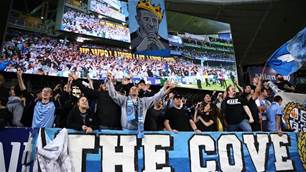After another loss on Friday night against Melbourne Victory, the Josep Gombau era at Western Sydney Wanderers has so far only seen three wins in 12 matches.
THE CENTRAL IDEA
Many people associate positional play with a desire to retain possession for possession’s sake. In world football, there would without a doubt be many instances where this belief could be proven to hold true.
However, when the philosophy is applied in the manner in which it was intended to be used in, possession and dominance of the ball becomes a tool to control time and space on the pitch – a means to an end rather than an end in and of itself. The focus with the ball is to move it to in turn move the opposition, whilst at the same time maintaining occupation of space in a way which facilitates access to dangerous positions on the pitch.

The philosophy goes beyond even the concept of movement of the ball to move the opposition. Louis Van Gaal puts it like this: “it is not about the opponent, it is not about the ball, it is about the space the ball may be played into and the opponent that may come into it”. To illustrate this point, think about what happens if the ball is played in the space in front of an opposition fullback.
The defender would approach the ball and in turn remove himself from his positional slot, opening space for a teammate to run into. If the space is covered by another member of the opposition team, there will come a point when space is opened somewhere else on the pitch after the chain of reactions ceases or comes to a break. This is the crux of positional play; the understanding and utilisation of space and time on the pitch.
Related Articles

Sky Blues, Wanderers to clash in ALM first-round derby

Socceroo-in-waiting seals Championship deal
.jpeg&h=172&w=306&c=1&s=1)
.png&h=600&w=850&c=0&s=1)











